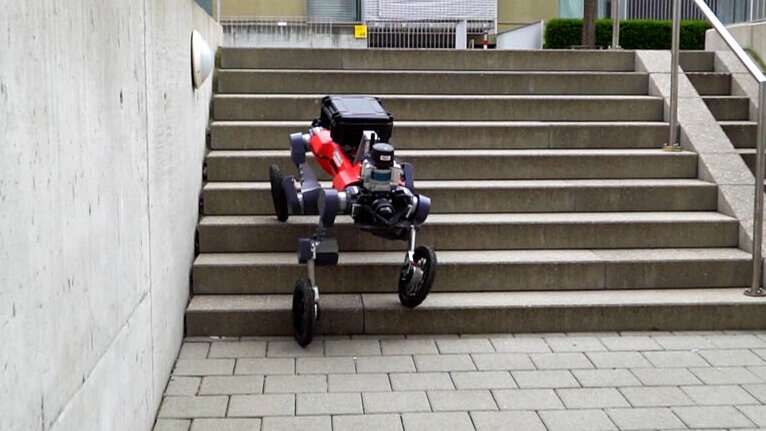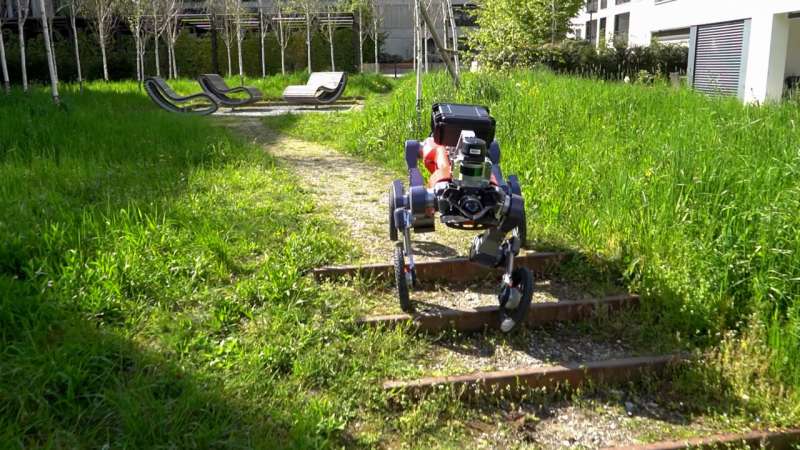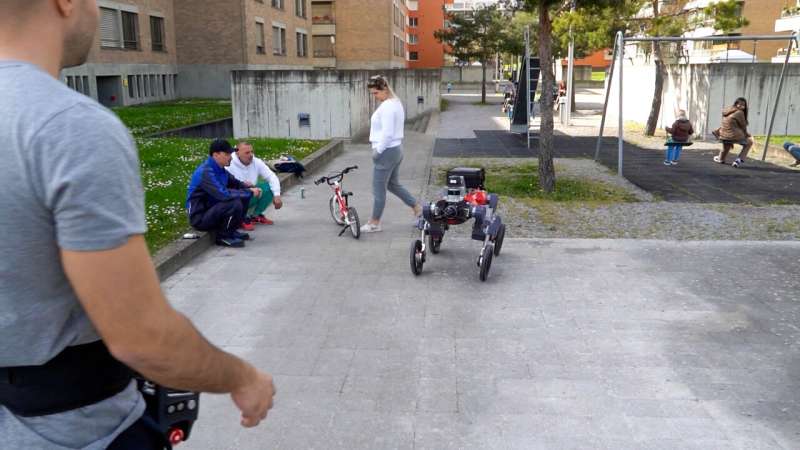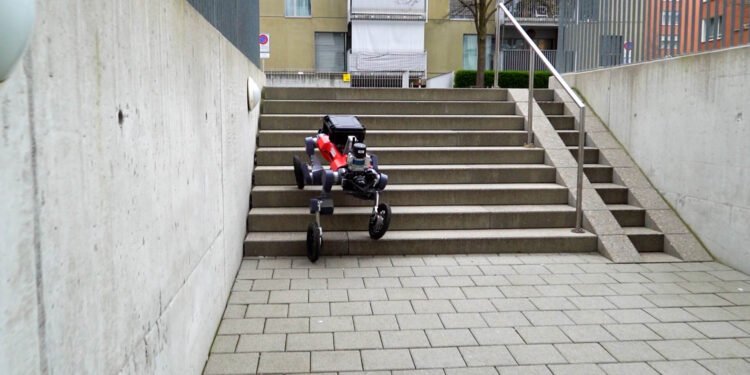
Fast-moving autonomous mobile robots could help to deliver goods to various locations, helping to tackle disruptions to product supply chains. Nonetheless, wheeled or legged robots alone might not be sufficient to complete deliveries both efficiently and independently.
Researchers at ETH Zurich’s Robotic Systems Lab recently introduced a new robot design that combines the capabilities of wheeled and legged robots. This robot, introduced in a Science Robotics paper, navigates environments using various reinforcement learning techniques, which allow it to smoothly transition between driving and walking modes, adapting to different terrains.
“The main objective of the project was to build a large-scale autonomous driving system for such a ground robot, with the fastest speed ever,” Joonho Lee, co-author of the paper, told Tech Xplore. “This is an outcome of more than five years of research in legged robotics, autonomous navigation, and robot perception.”
The robotic system developed by Lee and his colleagues builds on a previous robot created by team CERBERUS, a team including researchers at indoor drone company Flyability, which won the DARPA Subterranean Challenge in 2021. In contrast with the robot developed by team CERBERUS, however, their system has a simplified design and a more advanced AI-powered navigation system.
“Traditionally, navigation planning for ground robots has been done using online optimization methods,” Lee explained. “Such approaches work fine for simple wheeled robots or slow-walking robots, but in the case of fast-moving robots like ours (which can drive up to 20 km/h) they cannot provide fast enough navigation plans. For robots moving at 2 m/s, 0.5 seconds of delay can result in a 1 m error, which can lead to a catastrophic collision.”

To allow their robot to autonomously navigate environments, the researchers developed, trained, and tested various hierarchical reinforcement learning techniques. Ultimately, they trained a neural network-based controller that can process different types of inputs, creating new navigation plans for the robot within milliseconds.
“Another big advantage of our approach is that our neural net controller fully understands the nonlinear and complex dynamics of legged robots,” Lee said. “As it understands how the robot behaves on various terrains at different speeds, it can navigate the robot very efficiently.”

On smooth terrains that are easy to move on, the robot developed at ETH Zurich drives forward, thus utilizing its wheels and minimizing power consumption. In more complex terrains that would be difficult or impossible to navigate using wheels, such as in the presence of steps, the robot can switch to walking mode.
The neural network-based controller developed and trained by Lee and his colleagues can process sensory data to determine the most efficient way for the robot to travel on specific terrains. This allows the robot to effectively combine the strengths of conventional wheeled robots with those of legged robots.
“Wheeled robots are efficient but cannot traverse high obstacles,” Lee said. “On the other hand, legged robots are very good at overcoming obstacles and steep slopes, but their efficiency is very low because they have to drive more than 10 joints in an irregular pattern. Usually, walking robots can only operate for up to 1 hour. With the wheeled legs, our robot can overcome the same obstacles as normal walking robots with at least 3 times longer operation.”

The controller developed by Lee and his colleagues does not employ classical planning and model-based control techniques. Notably, these traditional methods were often found to perform poorly in real-world settings characterized by uncertainty and random disturbances.
More information:
Learning robust autonomous navigation and locomotion for wheeled-legged robots. Science Robotics(2024). DOI: 10.1126/scirobotics.adi9641.
© 2024 Science X Network
Citation:
Researchers create an autonomously navigating wheeled-legged robot (2024, June 5)
retrieved 5 June 2024
from https://techxplore.com/news/2024-06-autonomously-wheeled-legged-robot.html
This document is subject to copyright. Apart from any fair dealing for the purpose of private study or research, no
part may be reproduced without the written permission. The content is provided for information purposes only.










